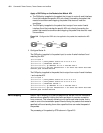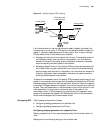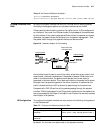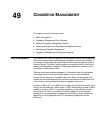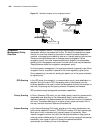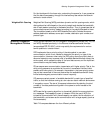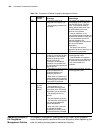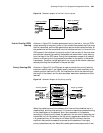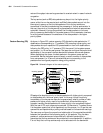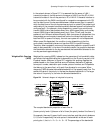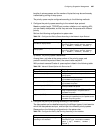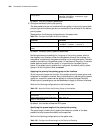
Selecting Congestion Management Policies 681
For the interface with the lower rate, customizing the queue for it can guarantee
that the data flows passing through this interface may also obtain the network
services to certain extent.
Weighted Fair Queuing Weighted Fair Queuing (WFQ) provides a dynamic and fair queuing mode, which
distinguishes the traffic based on the priority/weight and decides the bandwidth
size of each session according to the session situation. Thus, it guarantees that all
communications can be fairly treated according to the weight allocated to them.
The foundation based on which WFQ classifies the traffic includes the source
address, destination address, source port number, destination port number, and
protocol type.
Selecting Congestion
Management Policies
3Com routers implement the four congestion management policies (FIFO, PQ, CQ
and WFQ) discussed previously, in the Ethernet interface and serial interface
(encapsulated PPP, FR, HDLC), which may satisfy the requirements for various
service qualities to a certain extent.
FIFO implements the no priority policy of the data packet in user data
communication, which is not needed to determine the priority or type of the
communication. However, when using the FIFO policy, some low priority data in
abnormal operation may consume most of available bandwidths and occupy the
entire queue, which causes the delay of the burst data source, and the important
communication may be thereby discarded.
PQ can assure some communication transmission with higher priority. That is, the
strict priority sequence is conducted at the cost of transmission failure of data
packets with lower priority. For example, the packets in the lower priority queue
may not be transmitted in the worst case where the available bandwidth is very
limited and emergency communication occurs frequently.
CQ reserves a certain percent of available bandwidth for each type of specified
traffic, so that the interface running at a low rate can obtain network service even
if congestion occurs. The size of this queue is determined by deciding the total
number of the data packets configured in the queue to control access to the
bandwidth.
WFQ uses the fair queuing algorithm to dynamically divide the communications
into messages. The message is a part of a session. With the use of WFQ, the
interactive communication with a small capacity can obtain the fair allocation of
the bandwidth, as the same as the communication with a large capacity (such as
file transmission).
Table 719 compares between the four different policies:




